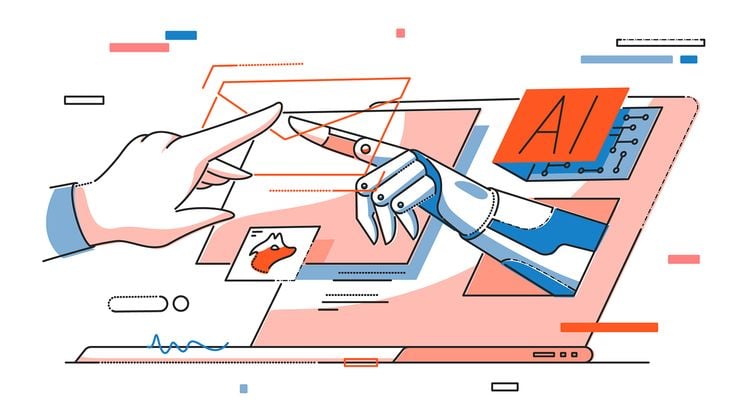AI Personalization Isn’t Ready For Primetime

Cold email is easily scalable. So, for many cold emailers, outbound is a numbers game.
This means that both outreach experts and the software landscape serving the industry have jumped on generative AI as a new way to achieve better results.
After all, if you’re looking for ways to scale, generative AI definitely has the potential to help.
The popularity of ChatGPT and its ease of use have had a strong effect on the outbound world.
Its main use case has been email personalization.
But even though I keep getting AI-personalized emails, I don’t think the technology is remotely ready for this use case.
How AI personalization looks now
Generative AI made it incredibly easy to write personalized copy (email subject lines or email body) that inputs prospect-specific information.
Generally speaking, you can personalize your cold emails in two ways:
- You can inject static information into your emails using custom variables (or merge tags). For example, if you have a list of recipients and know where they all work, you can use their company name as a custom variable and inject it into any part of your email.

- You can use advanced reasoning to create email copy based on the prospect-specific information. For example, if you know one of your prospects is the CEO of a company that’s nine years old, you can congratulate them on the long run, while if the company is two years old, you can congratulate them on the strong start.

Needless to say, the second approach has traditionally been more time-consuming because it requires a human who can interpret the data.
But that changed with generative AI. Now, AI is widely used to write personalized emails (or parts of emails).

In the example above, I used the recent LinkedIn posts of potential prospects and ChatGPT to interpret them, then generated “icebreaker” opening lines based on the content of the posts.
What’s amazing about this is how quickly you can generate meaningfully personalized content from relatively easy information to collect at scale.
But ChatGPT is not the only popular solution here – there are now standalone products focused on AI personalization. Examples include Lyne.ai or ColdMessage.io (which writes entire emails for you).
Some of these tools even do more than just text generation. They build pipelines to automatically collect data from the web that is later used for personalization. This means you don’t have to collect the data used for personalization on your end – you just need a website address or a LinkedIn URL.
Does it work, though?
Some cold emailers swear by AI personalization. And if it works for you, great!
For me, it’s a giant turnoff. Most of the time, I can immediately tell if an email I get is genuinely personalized. And I won’t be using it for now. Here’s why:
It’s difficult to make it look “real”
GPT is great at generating text and even implementing different tones of voice.
But it doesn’t mean that it’s easy to generate text that follows your tone of voice or to make it feel connected to the copy that you wrote without using AI.

The email above was likely written with some help from AI (the interpretation of my daily job + how many clients a typical company in my country serves.)
But it’s simply off, and more importantly, it doesn’t really personalize the email. Even if the AI-generated lines were 100% accurate, they would apply to a thousand other prospects with a similar job title and location.
Which means it’s the opposite of personalization. When receiving and reading this email, I don’t feel noticed – I feel thrown into a generic category along with anyone else who shares my job title.
Making sure the quality of the output is sound is time-consuming
Even though AI can personalize emails much faster than I can, the quality of its output isn’t always great. And checking it takes tons of time.
It’s difficult to connect AI-personalized copy with your offer
Have you ever heard about the personalization-privacy paradox?
It describes the tension between users' desire for personalized messaging and their concerns about data privacy. Users want tailored content and services but worry about misusing their personal information.
One way to mitigate the paradox is to “justify” extensive personalization. If your prospect can see that you researched them only to send them a deeply relevant email, they will be more likely to respond positively to the message.
This connection between personalization and the offer's relevance is difficult to replicate using AI, and it’s typically missing from AI-personalized emails.
It’s exploitative
Using a tool that automatically scrapes LinkedIn posts and generates personalized copy based on the information found, you’re pretending you’ve taken the time to research your prospects, but you haven’t.
This may evoke negative reactions from many recipients.
And it just doesn’t feel right to me. It’s deceitful, fabricated familiarity for the sake of persuasion.
Even if you don’t care about the ethics of it, AI personalization may come with tangible, negative consequences. If your prospects realize they’re being duped by the emails you send, it will cause long-standing damage to your reputation.
Robert B. Cialdini, Influence - The Psychology of Persuasion
What will happen next?
The way it’s implemented right now, AI personalization is too easy to identify. Anyone with experience using AI for text generation will eventually realize there isn’t a real human behind the copy written by the AI.
As more people personalize their cold emails at scale using surface-level information found on LinkedIn or the web, recipients will start seeing through the trick.
To address this, cold emailers will start training custom GPTs to have more control over the output. If you can train it on a large body of emails written in your desired communication style, then the quality of AI personalization could improve.
This would make it easier to connect the AI-personalized copy with your offer because you can give the custom GPT a full picture of your solution. And it would reduce the QA workload.
Still, genuine personalization will always yield superior results, even though it might be more time-consuming.
Instead of letting AI write my emails, here are some personalization-related problems I’d like AI to solve:
- Streamline data collection: AI can be used to extract data from unstructured text (think: websites.)
- Implement advanced logic to custom variables (e.g., interpret data in one column and choose which custom variable to inject into an email)
- Roast my email copy and suggest improvements (like Lavender.ai does)

If you have any other ideas for how AI will (and should) impact email outreach, let me know!




 Send cold emails with Hunter
Send cold emails with Hunter